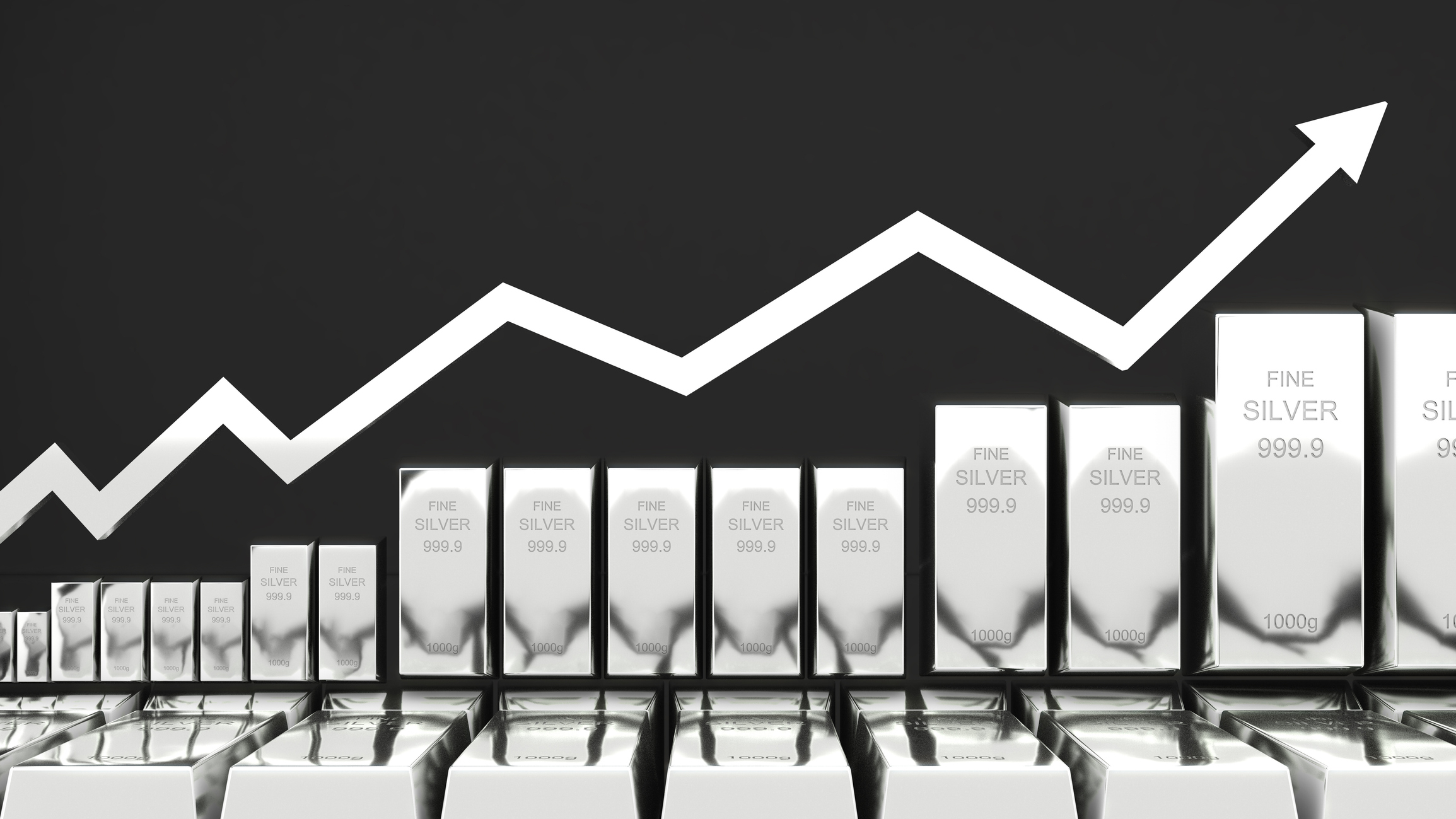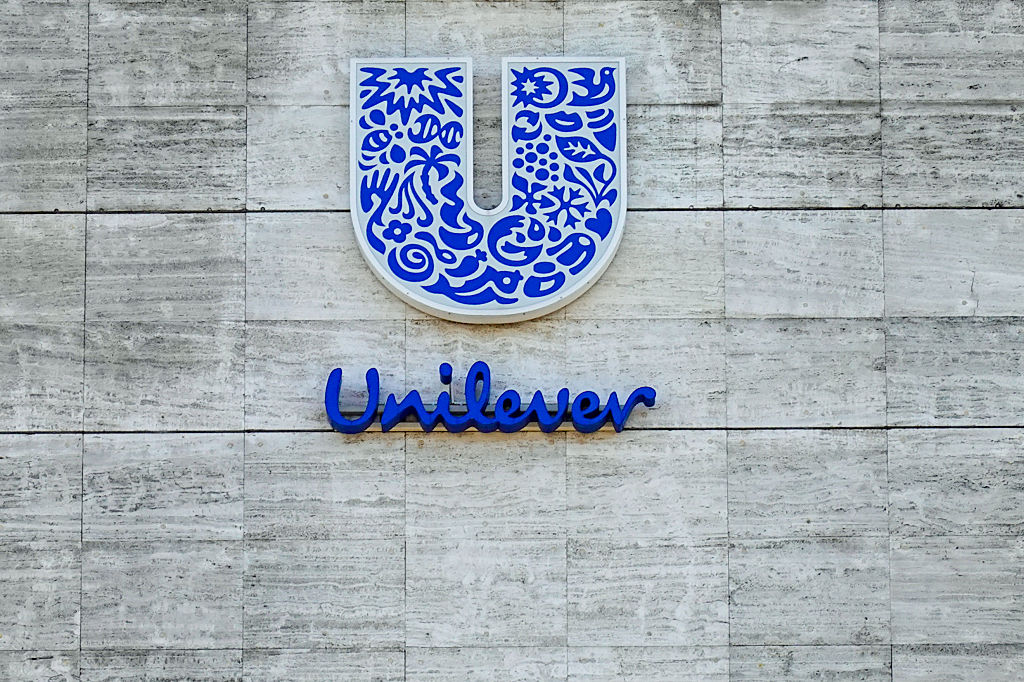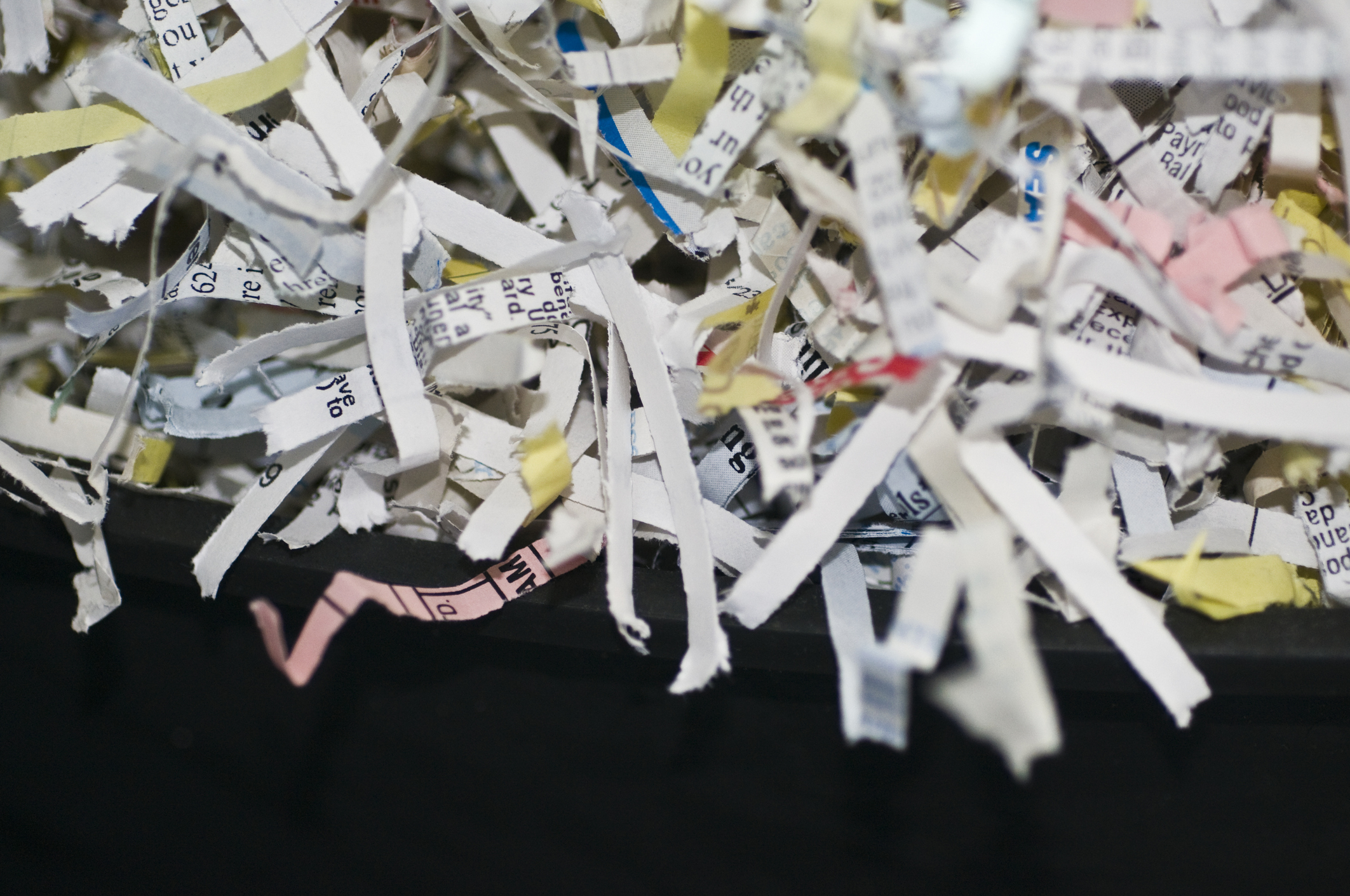How to profit from silver’s record rise
Silver often lets investors down, but there may now be room for further gains, says Dominic Frisby


Nothing can stop silver, it seems. Not even the $50-an-ounce mark. The price of $50/oz is the all-time high for silver. It reached that level in 1980, then again in 2011, but it’s never been able to get past it. It’s hard to think of any price in any market that is as psychologically significant a barrier as $50 silver. And yet this week silver sailed through it.
We might even have a supply squeeze on our hands – you get them in the silver markets every now and then. Demand from investors has shot up with the recent price surge, creating a shortage in London (where supply was already tight). Lease rates – the cost of borrowing the metal – have jumped by up to 30% in recent days.
Bid-offer spreads have risen from a typical three US cents to 20 cents. The spread between the London spot price and the Comex future price typically sits at minus 30 cents/oz. Suddenly, it’s $3/oz and silver has gone into backwardation: the spot price is now higher than the price of the future. That happened in 1980 as well, as silver was rocketing. By the way, if you adjust that $50 silver price for inflation, you get a figure around $200/oz for silver. Just in case you wanted an idea of what’s possible.
MoneyWeek
Subscribe to MoneyWeek today and get your first six magazine issues absolutely FREE

Sign up to Money Morning
Don't miss the latest investment and personal finances news, market analysis, plus money-saving tips with our free twice-daily newsletter
Don't miss the latest investment and personal finances news, market analysis, plus money-saving tips with our free twice-daily newsletter
The backwardation has prompted traders to fly 1,000oz bars from Comex vaults in New York to London. The price gap justifies the transport costs, and remember: silver is bulky compared with gold. It is not cheap to fly.
Why such a shortage of silver? The market has been in deficit for five years, meaning demand has exceeded supply. The shortfall is around 150 million ounces annually, with London’s stock down by a third since 2021. Annual global silver production from mines peaked in 2016 at 900 million ounces. It’s been in the 830-860 tonne range ever since.
A surge in demand for silver
The major factor affecting demand has been solar panels. Until 2021, demand for silver in photovoltaic cells consistently remained below 100 million ounces per annum. Now it’s close to 250 million ounces. With the world electrifying, this appetite is unlikely to subside.
What’s interesting is that demand from exchange-traded funds is still below 2021 levels. In other words, investors are not fully committed yet. There is room for greater investment demand, and that puts further upward pressure on price.
What adds yet more potential rocket fuel to the price is the absurd levels of paper silver – something I have never fully been able to explain, although I am reluctant to cry manipulation as many do. But there are something like 360 paper contracts for every physical contract, and that has the potential to cause a short squeeze if paper contract holders request physical delivery. It happened in 2011 when silver went to $50. It happened in 1980, too.
Remember, silver tends to move later in bull markets and by more. We are seeing that now. A recent poll I ran on X showed that while gold is widely agreed to be in innings six of nine, silver is perhaps not even in innings three. I put that down to excessive bullishness among silver bugs. The market has been rising since 2022. Just quietly. Still, you can’t be too bullish in a bull market. It’s recognising when it’s over – that is the skill.
Chartists point out that the cup-and-handle pattern is regarded as extremely bullish. Silver has traced one out over 50 years. Typically, you would set a target matching the height of the cup: the distance from the bottom of the cup ($4) to the rim: $46. That gives us a target price of $96. Lord knows what price that means the miners would go to.
Don’t get carried away with silver
But remember, this is silver. If it can find a way of letting you down, it will. I’ve covered this market for 20 years. It is characterised by years of bear market, years of waiting, years of nothing but losses, punctuated by occasional spikes of hope. We are enjoying one such spike now.
Everyone’s saying this time it’s different. I don’t doubt that this bull market has legs. But it’s still silver. Don’t get carried away. There are many reasons to own silver. But be clear why you own it – and don’t own it for the wrong reasons.
Silver is not the same as gold. Yes, it was once a monetary metal, although its main purpose was as a medium of exchange, not as a store of wealth – just as gold’s main purpose was more to be a store of wealth rather than a medium of exchange. Central banks, institutions and individuals still use gold as a store of wealth today. They don’t use silver. Yes, some of us have silver coins and bars; there are the ETFs, but silver has nothing like the significance that gold does in this respect. Meanwhile, silver’s role as a medium of exchange is long gone.
Silver remains a beautiful, captivating, magical metal with a plethora of uses. Demand for silver will only increase as we make more mobile phones, computers, batteries, medical devices and, of course, solar panels (the most rapidly growing source of demand). The market, as I say, has been in deficit for five straight years, causing above-ground stock (mainly from recycling) to run low.
With that extraordinary paper-to-physical ratio of 361 contracts for every physical ounce of silver, bubbling under the surface is always the potential for a huge short squeeze as dealers scramble for physical metal to honour paper contracts. This happens occasionally and seems to be happening now. But it is not a permanent state of affairs.
The gold/silver ratio
There is 15 times as much silver in the ground as there is gold, and this historical monetary ratio between the two was always around 15. This has led many to argue that we will return to that ratio at some point. If gold remains around $4,000/oz, then silver would be $266/oz. But that ratio is not coming back, because silver’s role as money is not coming back. Don’t be under any illusions. The only chance of us ever reaching a ratio of 15 is on a spike, such as we saw in 1980, but things will quickly revert. Currently, the ratio lies at 80.
The price action of silver is unlike any other metal. In the 1970s, it meandered around $5/oz, then suddenly exploded to $50 as the Hunt brothers tried to corner the market. It then collapsed and spent the next 25 years meandering around the $5 mark again. Things picked up after 2004. There were huge spikes and dips as it launched to $50/oz once again in 2011. Then it crashed again. It traded in a range between $15 and $30 for another decade, but then, largely riding on the coat-tails of gold’s bull market – roughly since the US froze Russian dollar assets – silver has been creeping up and up and up.
Silver at $50 is a huge line in the sand. Maybe this is a genuine breakout, maybe not. But we are now at $52. There is no resistance overhead. Typical price action would be for us to rally a bit more, pull back to the breakout level, retest, then off to new highs. That’s when we start heading towards those cup-and-handle highs. I don’t think $100 silver is an impossibility. But I shall be lightening up as we rise.
My favourite silver play, my largest silver position and one I have covered before is Sierra Madre Gold and Silver (Canadian Venture Exchange: SM). Some Flying Frisby and MoneyWeek readers got into this one a couple of years ago below 30 cents. It is now sitting majestically at C$1.45. It can go higher. If silver hits $100, this could become a 10-dollar stock.
Where to invest in silver now
This Canadian-listed company, with a market value of C$270 million, has a producing mine in Mexico, La Fortuna, which it acquired from silver mining giant First Majestic (NYSE: AG). First Majestic had put it under care and maintenance during the bear market.
While the quality of the asset was not in doubt, it was deemed too small for a company of First Majestic’s size to bring back into production; hence the partnership with Sierra Madre. Sierra Madre spent several years putting it back into production, meeting most targets ahead of schedule, although its cost per ounce was higher than anticipated at $30/oz.
Full-scale commercial production began in January 2025. Production currently stands around 700,000 ounces per annum. There are also several potential catalysts for the stock. Firstly, production costs will come down from $30/oz to about $21 over the next two years as the group replaces rented equipment with its own, increasing efficiency and turnover.
The company also processes between 300 and 350 tonnes of rock per day. Recent investment in the business means improved equipment, and processing will rise to 750-800 tonnes by the second quarter of next year. Production will double, in other words. The miner is aiming to double that figure again by late 2027. Remember, this company has a habit of reaching its targets, which is unusual in the sector.
The La Fortuna mine is projected to have at least 15 years of life. But the bulk of this stock’s potential comes from exploration. There are many past producing mines on the property (most closed in the early 20th century), which produced more than a million ounces of silver annually. Geologic mapping has identified 60 kilometres of mineralised veins. The group also has multiple historic resource reports, one showing 200 million ounces in the 1990s, which never materialised due to the bear market. There is plenty of metal there, in other words.
“This is why we bought the property,” CEO Alex Langer tells me. It could be “the largest undeveloped silver district in Mexico”. Exploration begins next year. First Majestic had plans for a mill to process 3,000 tonnes of rock per day at one of the properties. So why didn’t it explore the property itself? Because it owns a huge stake in Sierra Madre (38%), so it can sit back and let Sierra Madre do the work.
The goal is to grow what was a development play, now a junior producer, into a mid-tier silver producer. The expansion plans are coming just as silver is rising. It feels like just the right point in the cycle.
If the company produces silver at $30 and the silver price rises from $40 to $50, profits double. If production costs come down to $20 and the silver price rises to $60, they double again. If production itself doubles, profits double again. If the silver price goes to $100 and this firm makes a major discovery and turns itself into a district-scale producer, then this becomes an asymmetric bet.
Flying Frisby and MoneyWeek readers who got into this one at 30 or 50 US cents may be tempted to take some profit. But there is every reason to carry on holding. Ultimately, this miner sinks or swims with the silver price, but even if silver just stays where it is there is still enormous potential for growth.
Dominic Frisby is the author of The Secret History of Gold: Money, Myth, Politics & Power, available at all good bookshops. He writes the investment newsletter The Flying Frisby: theflyingfrisby.com.
This article was first published in MoneyWeek's magazine. Enjoy exclusive early access to news, opinion and analysis from our team of financial experts with a MoneyWeek subscription.
Get the latest financial news, insights and expert analysis from our award-winning MoneyWeek team, to help you understand what really matters when it comes to your finances.
Dominic Frisby (“mercurially witty” – the Spectator) is as far as we know the world’s only financial writer and comedian. He is the author of the popular newsletter the Flying Frisby and is MoneyWeek’s main commentator on gold, commodities, currencies and cryptocurrencies. He has also taken several of his shows to the Edinburgh Festival Fringe.
His books are Daylight Robbery - How Tax Changed our Past and Will Shape our Future; Bitcoin: the Future of Money? and Life After the State - Why We Don't Need Government.
Dominic was educated at St Paul's School, Manchester University and the Webber-Douglas Academy Of Dramatic Art.
You can follow him on X @dominicfrisby
-
 How gifting money this Christmas could lower your inheritance tax bill
How gifting money this Christmas could lower your inheritance tax billCash is an easy and quick present to give over Christmas – and it could protect some of your estate from the taxman down the line
-
 £100 contactless card limit to be lifted
£100 contactless card limit to be liftedConsumers will be able to set their own contactless limits from March 2026, under new rules from the Financial Conduct Authority
-
 Luana Lopes Lara: The ballerina who made a billion from prediction markets
Luana Lopes Lara: The ballerina who made a billion from prediction marketsLuana Lopes Lara trained at the Bolshoi, but hung up her ballet shoes when she had the idea of setting up a business in the prediction markets. That paid off
-
 British blue chips offer investors reliable income and growth
British blue chips offer investors reliable income and growthOpinion Ben Russon, portfolio manager and co-head UK equities, ClearBridge Investments, highlights three British blue chips where he'd put his money
-
 Coreweave is on borrowed time
Coreweave is on borrowed timeAI infrastructure firm Coreweave is heading for trouble and is absurdly pricey, says Matthew Partridge
-
 Renewable energy funds are stuck between a ROC and a hard place
Renewable energy funds are stuck between a ROC and a hard placeRenewable energy funds were hit hard by the government’s subsidy changes, but they have only themselves to blame for their failure to build trust with investors
-
 Profit from document shredding with Restore
Profit from document shredding with RestoreRestore operates in a niche, but essential market. The business has exciting potential over the coming years, says Rupert Hargreaves
-
 The war dividend – how to invest in defence stocks as the world arms up
The war dividend – how to invest in defence stocks as the world arms upWestern governments are back on a war footing. Investors should be prepared, too, says Jamie Ward
-
 Literacy Capital: A trust where great returns fund a good cause
Literacy Capital: A trust where great returns fund a good causeThere’s plenty to like about specialist private-equity trust Literacy Capital, says Max King
-
 An AI bust could hit private credit – could it cause a financial crisis?
An AI bust could hit private credit – could it cause a financial crisis?Opinion Private credit is playing a key role in funding data centres. It may be the first to take the hit if the AI boom ends, says Cris Sholto Heaton
